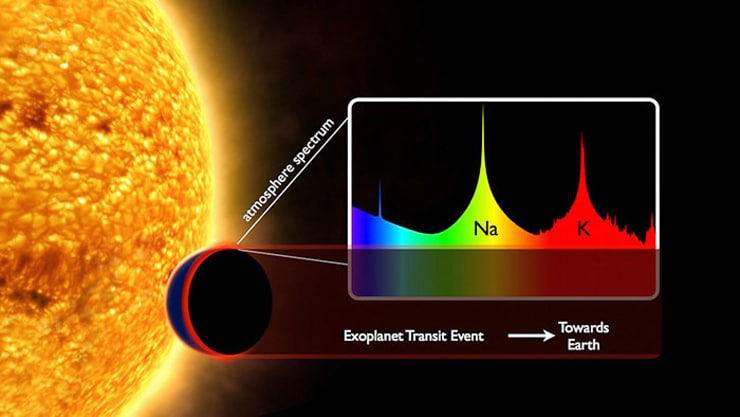Astronomers say the best way to use the James Webb Space Telescope for studying the atmospheres of distant worlds will combine two of its infrared instruments.
The telescope is scheduled to launch in late 2018.
“We wanted to know which combination of observing modes (of Webb) gets you the maximum information content for the minimum cost,” says Natasha Batalha, graduate student in astronomy and astrophysics and astrobiology at Penn State, and lead scientist on this project.
“Information content is the total amount of information we can get from a planet’s atmospheric spectrum, from temperature and composition of the gas—like water and carbon dioxide—to atmospheric pressures.”
Batalha and Michael Line, assistant professor in the School of Earth and Space Science at Arizona State University, developed a mathematical model to predict the quantity of information that different Webb instruments could extract about an exoplanet’s atmosphere.

Better together
Their model predicts that using a combination of two infrared instruments—the Near Infrared Imager and Slitless Spectrograph (NIRISS) and the G395 mode on the Near Infrared Spectrograph (NIRSpec)—will provide the highest information content about an exoplanet’s atmosphere.
NIRISS is a versatile camera and spectrograph that will observe infrared wavelengths similar to those the Hubble Telescope covers. NIRISS, according to Batalha and Line, should be combined with the G395 mode on NIRSpec, which will observe targets in longer infrared wavelengths at Webb’s highest resolution.
Three main characteristics affect how much information an instrument can extract—resolution, maximum observable brightness, and wavelength range. These combined determine the total observable fraction of the information content of a planet’s atmospheric spectrum.
Both NIRISS and NIRSpec will observe near-infrared wavelengths, the region of the electromagnetic spectrum in which the stars that exoplanets orbit around shine brightest. NIRISS is poised to measure a strong signature of water and NIRSpec can do the same for methane and carbon dioxide, three chemical compounds that provide a substantial amount of information about an atmosphere.
Batalha and Line tested each of ten likely observing methods on its own and in every possible combination with the other methods to determine which would maximize the total information content.
Hunt for life on exoplanets gets new tools
They retrieved the information from a set of simulated planets with temperatures and compositions that cover the range of previously observed exoplanet atmospheres. By comparing the retrievable information content in each planet’s atmosphere, Batalha and Line found that this one combination of NIRISS and NIRSpec modes gives the most information regardless of the exoplanet’s temperature or composition. The researchers report these results in The Astronomical Journal.
“We won’t know a planet’s temperature ahead of time,” says Batalha. “If you’re going to do a shot in the dark observation, you have the greatest chance of getting the information you want with this combination of instruments.”
As an exoplanet crosses between its host star and Earth’s telescopes, some of the star’s light passes through the exoplanet’s atmosphere. The exo-atmosphere leaves its fingerprint in the star’s light—the planet’s transmission spectrum—from which astronomers can learn about the exo-atmosphere’s temperature, chemical composition, and structure. The researchers’ information content analysis focuses on the information retrievable from the transmission spectrum of a planet.
The first Earth 2.0
While Webb will not launch until late 2018, but astronomers are already planning the first set of observations they would like from the telescope.
“If we can strategize now,” says Batalha, “by the time the first cycle of formal proposals comes around we can ensure that we are picking the best modes for larger proposals and not waste valuable observing time. This way everyone starts on an even playing field with the science.”
Scientists want robots to build big space telescope
While they highlight two NIRISS and NIRSpec modes as the best combination for observing most exo-atmospheres, Batalha and Line explain that the other modes will still be useful to observe different features of exo-atmospheres that the astronomers have not tested for, like clouds, haze, and atmospheres hot enough to emit their own light.
“In the future,” Batalha says, “there will be a push to characterize the first Earth 2.0. If we don’t nail this down now and master the art of characterizing exo-atmospheres, we will never accurately characterize Earth 2.0.”
The National Science Foundation, the Kavli Summer Program in Astrophysics, the NASA Astrobiology Program Early Career Collaboration Award, and the NASA Hubble Fellowship supported this research.
Source: Kimberly Cartier for Penn State



